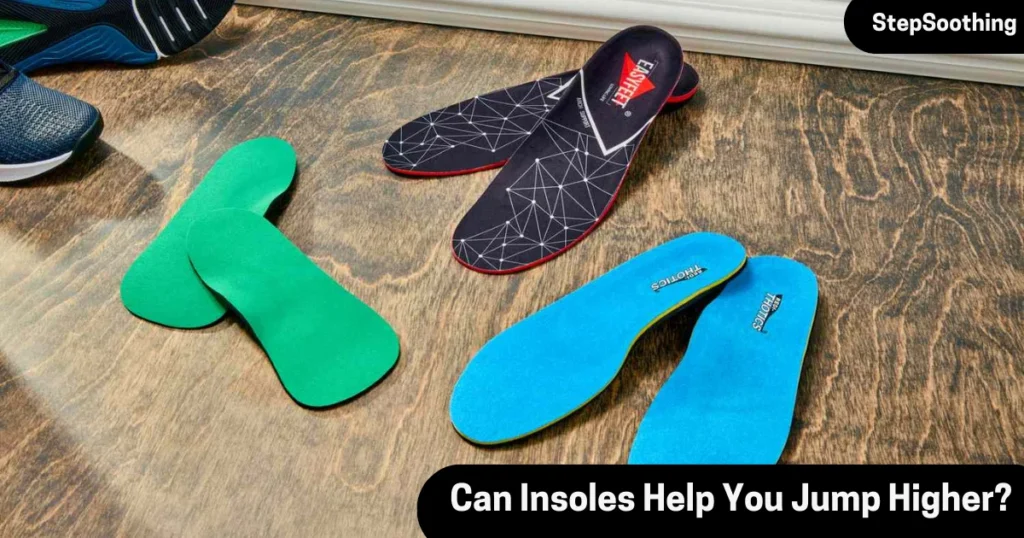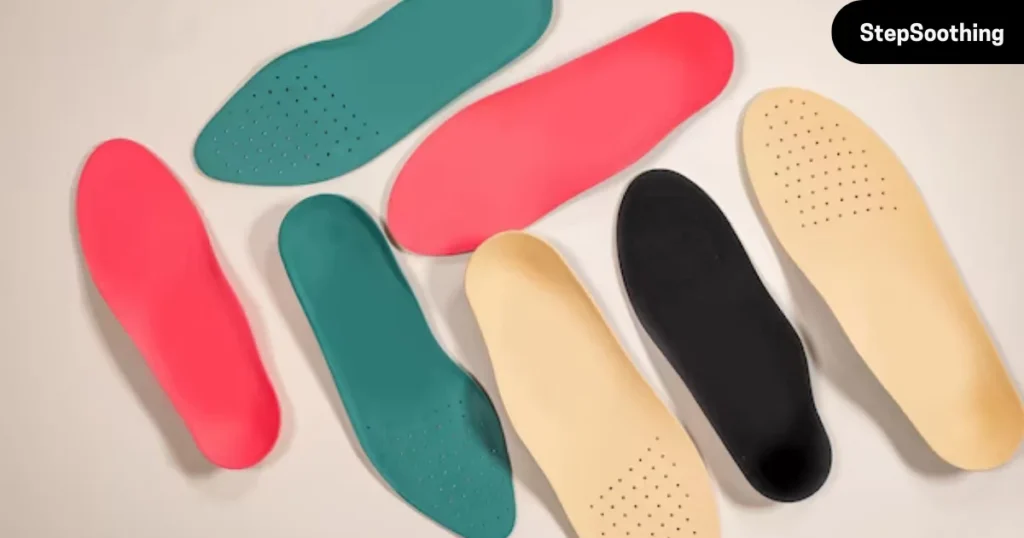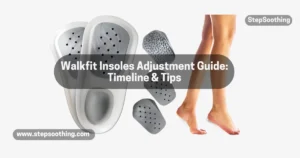Jumping higher is a desire shared by many athletes, from basketball players aiming for that slam dunk to volleyball players reaching for the perfect spike. While proper training and technique play crucial roles in improving vertical leap, some wonder if insoles can provide an extra boost. Let’s explore this topic in detail.

1.Understanding Insoles and Their Functionality
Insoles, also known as shoe inserts or footbeds, are designed to provide support, cushioning, and alignment for the feet. They come in various materials and designs, catering to different foot types and activities. The primary functions of insoles include:
i. Support:
Insoles help distribute weight evenly across the foot, reducing strain on specific areas such as the arch or heel. This support can improve overall foot alignment and stability during movement.
ii. Cushioning:
Many insoles feature cushioning materials like gel or foam, which absorb shock and impact during activities like running or jumping. This cushioning can reduce fatigue and discomfort, allowing athletes to perform better for longer periods.
iii. Alignment:
Proper foot alignment is crucial for optimal biomechanics and performance. Insoles with features like arch support or heel cups can help align the foot properly, potentially improving jump mechanics and reducing the risk of injury.
2.The Relationship Between Insoles and Vertical Leap
i. Biomechanical Effects:
Studies have investigated the biomechanical effects of wearing insoles on jumping performance. Some research suggests that certain types of insoles can alter foot mechanics, potentially leading to improvements in vertical leap.
ii. Potential Benefits:
Athletes with biomechanical inefficiencies or foot issues may benefit from wearing insoles tailored to their needs. For example, individuals with flat feet or overpronation might find relief and improved performance with supportive insoles.
iii. Individual Variability:
It’s essential to recognize that the effectiveness of insoles can vary among individuals. Factors such as foot anatomy, biomechanics, and training history can influence how someone responds to wearing insoles for jumping.

3.Practical Considerations for Athletes
i. Proper Fit and Comfort:
When considering using insoles for jumping higher, athletes should prioritize proper fit and comfort. Ill-fitting or uncomfortable insoles can cause more harm than good, potentially leading to discomfort or injury during training or competition.
ii. Gradual Integration:
Athletes interested in incorporating insoles into their training regimen should do so gradually. Slowly introducing them during practice sessions allows the body to adapt to any changes in foot mechanics and minimizes the risk of overuse injuries.
iii. Consultation with Professionals:
Before investing in specialized insoles for jumping, athletes should consult with healthcare professionals or sports specialists. These experts can assess individual needs, recommend suitable options, and provide guidance on proper usage and integration into training routines.
In conclusion, while insoles may offer some benefits for improving vertical leap, their effectiveness varies among individuals. Athletes interested in using insoles as a tool for enhancing jumping performance should prioritize proper fit, comfort, and consultation with professionals to maximize potential benefits while minimizing risks.
4.The Promise of Insoles: How They Can Make a Difference
Now, let’s talk about insoles. These small inserts placed inside your shoes are designed to provide additional support, cushioning, and stability to your feet. The idea behind using insoles for jump enhancement is that they can help optimize foot alignment, distribute pressure evenly, and improve shock absorption during takeoff and landing. By altering the biomechanics of your feet, insoles may have the potential to positively influence your overall jump performance.
5.Real Results Examining Studies and Testimonials
While the concept of insoles improving jump height may sound promising, it’s essential to look at the evidence. Scientific studies have explored the effectiveness of insoles for jump enhancement, with some suggesting modest improvements in jump height, especially among individuals with specific biomechanical issues. Additionally, many athletes who have incorporated insoles into their training routines report feeling more stable and supported during jumps, as well as experiencing reduced fatigue and discomfort.
6.Choosing the Right Insoles
Not all insoles are created equal, so it’s essential to choose the right ones for your needs. When selecting insoles, consider factors such as your foot shape, arch type, and intended use. Look for insoles that provide adequate support and cushioning without sacrificing comfort or mobility. Customization options, such as heat-moldable materials or adjustable arch supports, can further enhance the fit and feel of your insoles.

7.Tips and Tricks for Maximizing Insole Benefits
To get the most out of your insoles for jump performance, it’s essential to use them correctly. Start by ensuring that your insoles fit properly inside your shoes and don’t cause any discomfort. Experiment with different types of insoles to find the ones that work best for you, and gradually incorporate them into your training routine. Pay attention to how your body responds and adjust accordingly to maximize the benefits of using insoles for jumping.
8.Beyond Jumping: Additional Benefits of Insoles
While much of the focus has been on how insoles can improve jump height, they offer a range of other benefits as well. Insoles can help prevent common foot injuries such as plantar fasciitis and shin splints by providing support and cushioning. They can also improve overall foot comfort and reduce fatigue during physical activity, contributing to better overall athletic performance and enjoyment.
9.Conclusion
In conclusion, while the idea of insoles helping you jump higher may seem simple, the reality is a bit more nuanced. While insoles can potentially improve jump performance by optimizing foot mechanics and providing support, they’re not a magic solution. It’s essential to choose the right insoles for your needs, use them correctly, and continue to focus on proper training and technique. With patience, dedication, and the right tools, you can take your jumping skills to new heights.
10.Frequently Asked Questions About Insoles and Jumping Higher
Q1.Do insoles really help you jump higher?
While insoles can provide support, cushioning, and alignment for the feet, their effectiveness in improving vertical leap varies among individuals. Some athletes may experience benefits from wearing insoles tailored to their needs, particularly if they have biomechanical inefficiencies or foot issues. However, the extent of improvement in jumping performance depends on factors such as foot anatomy, biomechanics, and training history.
Q2.What type of insoles is best for improving vertical leap?
The best type of insoles for improving vertical leap depends on individual needs and preferences. Athletes with flat feet or overpronation may benefit from supportive insoles with features like arch support or heel cups to help align the foot properly. Additionally, insoles with cushioning materials like gel or foam can reduce fatigue and discomfort during jumping activities.
Q3.Can wearing insoles increase my jumping height instantly?
While wearing insoles may provide some immediate comfort and support, significant improvements in jumping height typically require consistent training and proper technique. Insoles can complement a comprehensive training program by enhancing foot alignment, reducing fatigue, and potentially minimizing the risk of injury. However, instant increases in jumping height are unlikely solely from wearing insoles.
Q4.Are there any risks associated with using insoles for jumping?
While insoles can offer benefits for some athletes, there are potential risks associated with improper usage or ill-fitting insoles. Wearing insoles that don’t suit your foot type or biomechanics can lead to discomfort, blisters, or even exacerbate existing foot issues. It’s essential to prioritize proper fit, comfort, and consultation with professionals when considering using insoles for jumping.
Q5.How should I choose the right insoles for improving my vertical leap?
Choosing the right insoles for improving vertical leap involves considering factors such as foot anatomy, biomechanics, and personal preferences. Consulting with healthcare professionals or sports specialists can help assess individual needs and recommend suitable options. Additionally, athletes should prioritize insoles that offer proper support, cushioning, and alignment to enhance jumping performance effectively.
Read More



